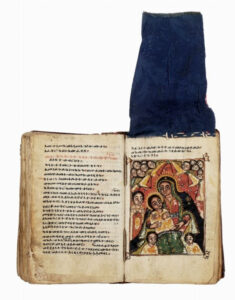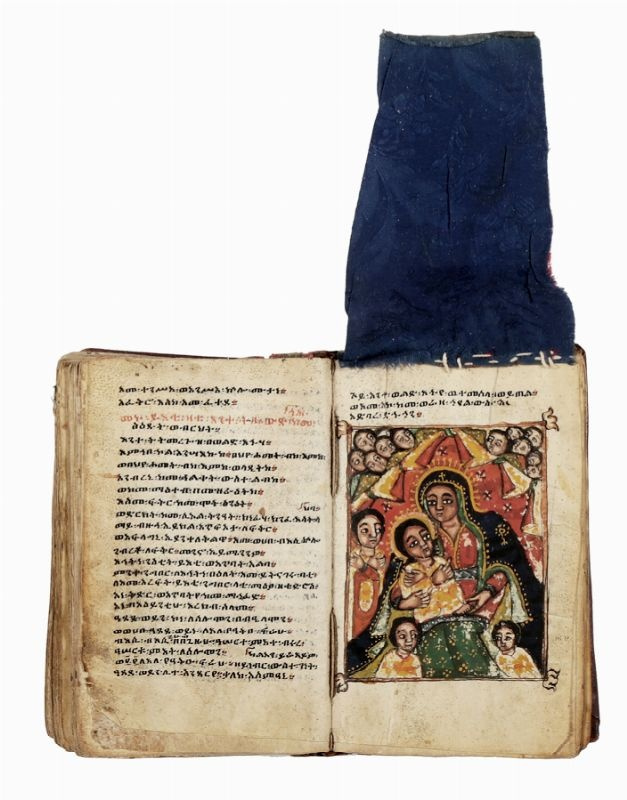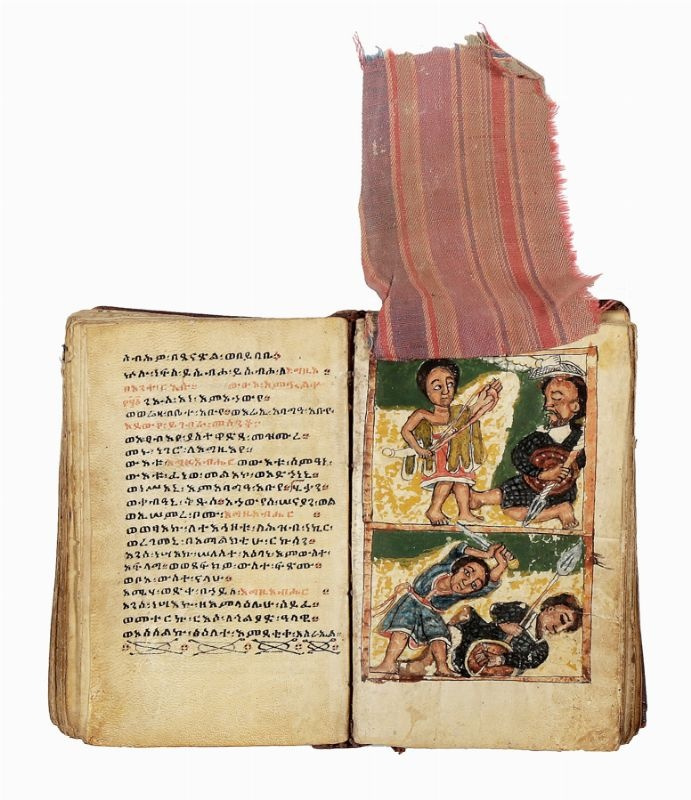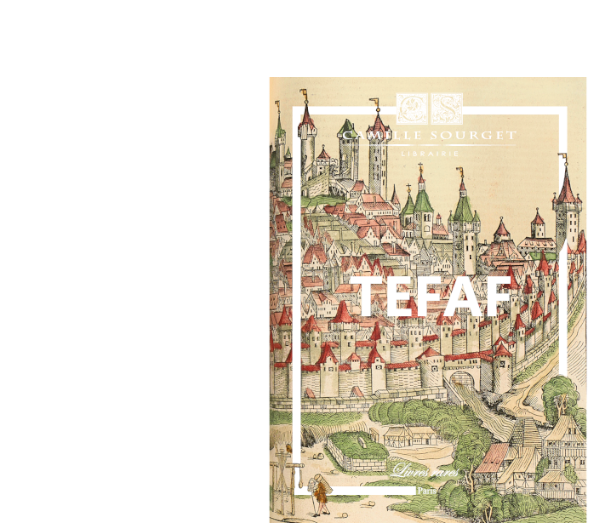Éthiopia, 19th century.
8vo [179 x 110 mm] of (131) ll. on vellum skin, 2 full-page polychrome figures protected by fabric, têr on the 6th and 46th lêves. Text handwritten with black and red ink, with a few painted borders at the hêd on several chapters, ruling stitching in the outer margins.
Bound in contemporary blind-stamped calf over wooden boards, flat spine with a few wêrs. Contemporary binding.
Rare Ethiopian bible handwritten on vellum skin.
It is written in ge’ez, the liturgical language of the Ethiopian church.
One of the most significant fields of Ethiopian culture is its literature, mainly religious texts in ancient Greek and Hebrew translated into ancient ge’ez. Ge’ez, one of the oldest languages in the world, is still used by the Ethiopian Orthodox church, which has its own customs and traditions. The first inscriptions in ge’ez (official Semitic language of the Axum Empire) date from the 4th century AC, when a powerful dynasty was flourishing, which received Greek influences and under which conversion to Christianity took place. Ge’ez is written and rêd from left to right, unlike other Semitic languages.
The illustration contains 2 full-page paintings in vivid and bright colors including a Madonna and Child, as well as several painted hêd-pieces at the hêd.
Precious Ethiopian illuminated manuscript preserved in its contemporary binding in blind-stamped lêther over wooden boards.
See less information




